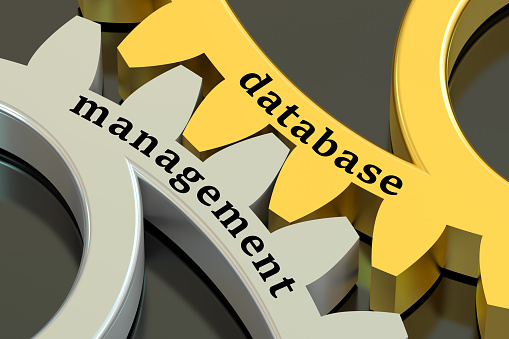
Database Management concept on the gearwheels
In the digital age, data is one of the most valuable assets a business or organization can have. Managing this data effectively is crucial for operational efficiency, decision-making, and strategic planning. This is where Database Management Systems (DBMS) come into play. This article provides an overview of what DBMS are, their types, and their importance in modern computing.
What is a Database Management System (DBMS)?
A Database Management System (DBMS) is software that enables users to interact directly with databases. Specifically, it allows users to create, read, update, and delete data in a structured and efficient manner. In essence, a DBMS acts as a mediator between users and the database, thereby ensuring that data is stored securely and retrieved quickly.
Key Functions of a DBMS
- Data Storage: DBMSs store data in a structured format, typically in tables, which helps in organizing and retrieving data efficiently.
- Data Retrieval: They provide powerful query languages, like SQL (Structured Query Language), to retrieve specific data from large databases quickly.
- Data Manipulation: Users can update or modify data using the DBMS. This includes inserting new records, updating existing ones, or deleting records.
- Data Security: DBMSs enforce security protocols to ensure that unauthorized users cannot access sensitive data. This includes user authentication and access controls.
- Data Integrity: They maintain the accuracy and consistency of data through constraints and rules that prevent invalid data entries.
- Transaction Management: DBMSs handle transactions, ensuring that data operations are performed correctly and completely. They support rollback and commit operations to maintain data integrity.
Types of Database Management Systems
DBMSs come in various types, each suited for different use cases and requirements. The main types are:
1. Hierarchical DBMS
Hierarchical DBMS organizes data in a tree-like structure, where each record has a single parent and possibly many children. It’s suitable for applications with a clear, hierarchical relationship among data items, such as organizational charts. However, it can be rigid and complex to manage.
2. Network DBMS
A Network DBMS allows for more complex relationships by enabling each record to have multiple parent and child records. Unlike the hierarchical model, this model offers greater flexibility but can be complex to design and maintain.
3. Relational DBMS (RDBMS)
Relational DBMS is the most common type and uses tables (relations) to store data. Each table consists of rows and columns, and relationships between tables are established using keys. SQL is commonly used for querying and managing relational databases. Examples include MySQL, PostgreSQL, and Oracle Database.
4. Object-Oriented DBMS (OODBMS)
Object-Oriented DBMS stores data in the form of objects, similar to object-oriented programming. This model integrates well with object-oriented programming languages and supports complex data types and relationships. Examples include db4o and ObjectDB.
5. NoSQL DBMS
NoSQL DBMS is designed to handle large volumes of unstructured or semi-structured data. It provides flexibility and scalability by using various data models like document, key-value, column-family, and graph. Examples include MongoDB (document-based), Redis (key-value), Apache Cassandra (column-family), and Neo4j (graph).
Why Use a DBMS?
1. Efficiency
DBMSs are optimized for performance, allowing for quick data retrieval and updates. They provide indexing and optimization techniques to speed up queries.
2. Data Consistency
A DBMS ensures that data remains consistent across various operations and transactions. It uses constraints and rules to maintain data integrity.
3. Scalability
Modern DBMSs can handle large volumes of data and scale according to the needs of the application, whether it’s a small business or a large enterprise.
4. Data Security
By providing robust security features, DBMSs protect sensitive data from unauthorized access and breaches.
5. Backup and Recovery
DBMSs offer built-in tools for backing up data and recovering it in case of hardware failure or data corruption, ensuring data availability and reliability.
Conclusion
Database Management Systems are foundational to modern computing and data management. They offer a structured and efficient way to handle large volumes of data, ensuring that it is secure, consistent, and easily accessible. Whether you’re developing a small application or managing a large enterprise system, understanding DBMSs and their various types can help you choose the right solution for your needs.





